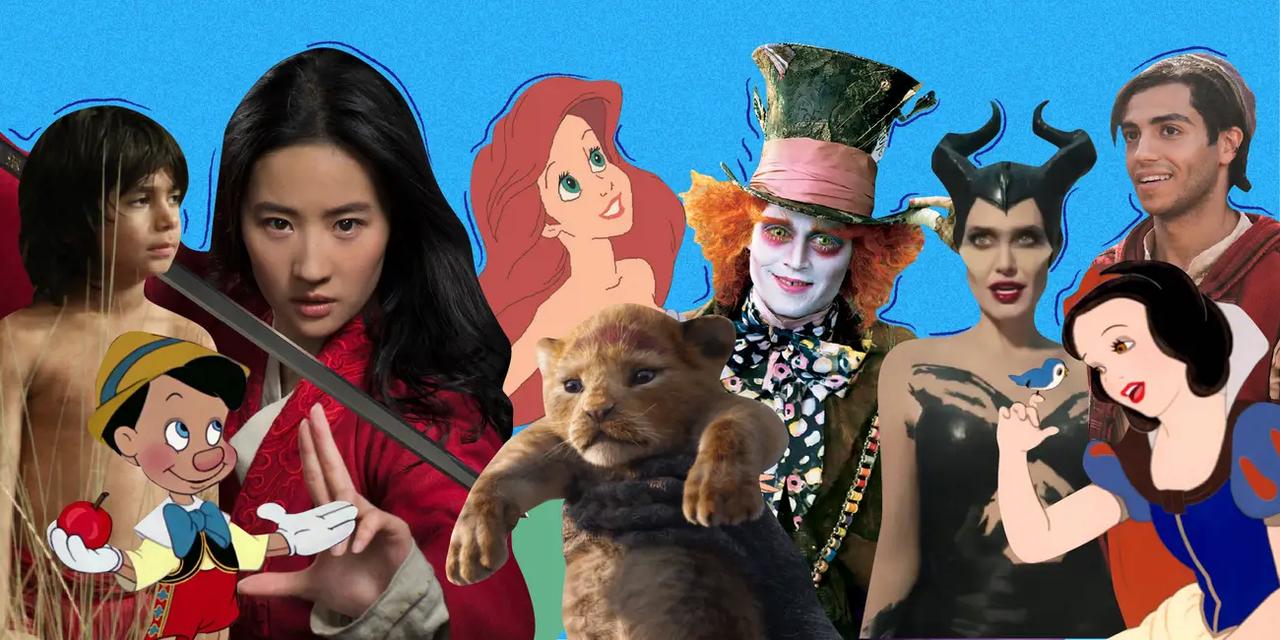
A notable trend that has gained prominence in the film industry is the live-action remake. Studios are revisiting their extensive archives of iconic fantasy epics and animated masterpieces, bringing these treasured tales into a new, seemingly more "realistic" light.
However, a recurring concern remains with each new remake that appears on our screens: are these live-action versions needed, or are they just a sign of Hollywood's desire to repackage nostalgia?
Live-action remakes are film adaptations that reimagine classic animated movies into live-action formats using real actors, CGI, and updated storytelling.
Since 2010, Disney has been the main driver of this trend, producing numerous live-action remakes of its beloved animated classics. A few of the most recognizable remake films are "Cinderella" (2015), "Aladdin" (2019), "The Lion King" (2019), and most recently "Lilo and Stitch," released May 22, 2025.
Netflix and HBO Max are also part of this remake trend, with a stronger focus on adapting Japanese anime and narrative-driven video games into live-action formats. One such example is the Last of Us TV series, which airs on HBO Max with its second season airing from April to May of 2025.

A live-action remake may be the first time a classic narrative is shown to a newer audience. A contemporary live-action adaptation can be more approachable, aesthetically pleasing, and relatable to modern audiences, whereas the original's animation style or pacing may feel outdated. This guarantees that classic stories will continue to have an impact on people of all ages.
Previously unthinkable levels of visual grandeur and deep detail are now possible thanks to modern filmmaking technology. A new layer to stories that were previously constrained by animation techniques can be added by rendering iconic scenes, mythical creatures, and magical moments with astounding realism.
Live-action remakes offer an opportunity to delve deeper into characters' motivations, backstories, and emotional complexities. Without drastically altering the essence of the original story, directors can add new aspects, develop unexplored themes, or subtly change plot points. This results in a more nuanced approach to the story being interpreted.
From a studio’s perspective and a business standpoint, remakes are safe because they reduce the need to heavily market the product and there is a pre-existing fanbase already present, eagerly awaiting the release of the film.
Animated films have a distinct charm and uniqueness that make it hard, if not impossible, to recreate them in live-action. The exaggerated emotions, magical physics, and whimsical designs are all made possible by the animation's expressiveness. Translating it into live-action loses its original artistic vision.
What value does a remake serve if a story is already flawless in its original form, except for being a simple cash grab? The plot and character development of many remakes are so similar to the original that viewers are left wondering why they bothered to watch it when they could just watch the original a second time.
Hollywood, indicated by the number of remakes it produces, can be seen as being creatively bankrupt. Instead of investing in new ideas, original screenplays, and diverse voices, studios tend to fall back on familiar properties, restricting their innovation and leading to a cinematic landscape saturated with identical content.
Live-action remakes are not a necessity and should never be the case. The reason is that re-releases are a thing that is possible, especially in our modern entertainment world, where watching films and TV shows through streaming services is the new norm.
In the instance that a studio decides to do a live-action remake of one of their established animated IPs, it is never done to add new material to the story that amplifies the original. The design or the characteristics of the original characters are changed in ways that neither make sense nor fit into the fantasy world these fictional creatures belong to.
Most of Disney’s live-action remakes appear this way, with a number of them being way worse than the original animated film. One such example is 2025’s Snow White, directed by Marc Webb. It is Disney’s lowest-rated live-action remake, sitting at a 1.9-star rating on IMDB.
Whether you believe live-action remakes are necessary or not, their existence lies in their purpose. If a remake can genuinely offer a fresh, compelling, and artistically justified interpretation of a story, one that enhances rather than merely replicates, then it might indeed be deemed necessary. Otherwise, there is no point to it.